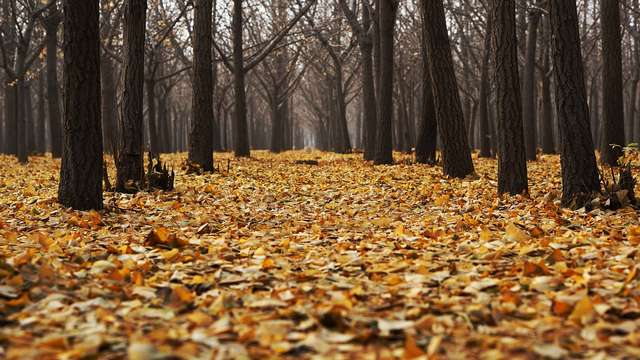Every autumn leaves turn color from green to orange, yellow, red and brown. What causes this process? Here is a simplified explanation.
Year after year leaves change color from green to a whole palette of yellows, oranges, and reds. This process can be so spectacular some areas in USA and Canada actually offer guided fall leave tours for groups of tourists. While everybody can enjoy in beauty of turning colors, some people also wonder why do leaves change color in autumn.

The complete answer to this question is still partly a mystery for scientists, but we can find a pretty simple explanation, understandable to ordinary people. Before we try to find the reason for the colors of autumn we should know why are leaves green in the first place. So what makes leaves green?
Leaf Pigments
The simple answer is - because of chlorophyll. Plants are green thanks to the pigment called chlorophyll and chlorophyll is green because of the magnesium ion in the active part of the molecule just like iron ion causes hemoglobin in animals' blood to look red.
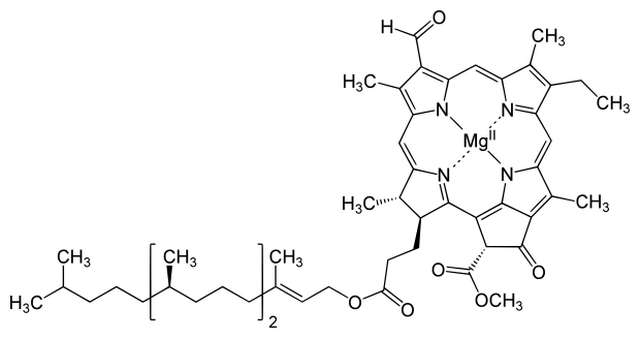
Chlorophyll is not interesting for our case just because it gives a color, but because it synthesizes carbohydrates (sugars), which are the source of energy for the plant as well. This process is called photosynthesis.

Apart from the chlorophyll, we have two important groups of pigments in the leaves: anthocyanins and carotenoids. They both contribute to the color of the leaves but are in most cases almost completely overshadowed by the power of green chlorophyll.
This is an example of the chemical structure of anthocyanin: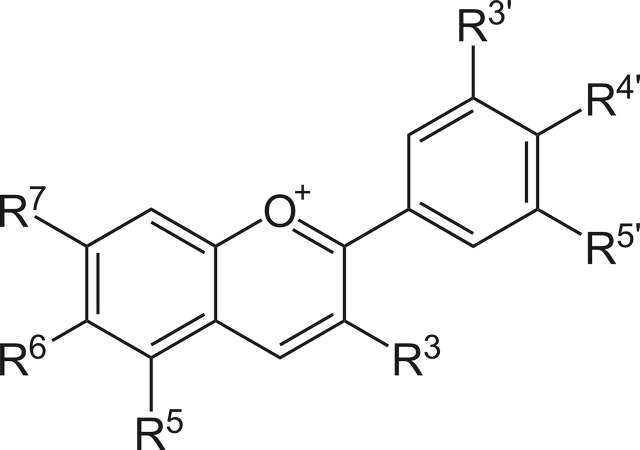 Several fruits and vegetables are known by containing anthocyanins. For instance blueberries or eggplants:
Several fruits and vegetables are known by containing anthocyanins. For instance blueberries or eggplants:

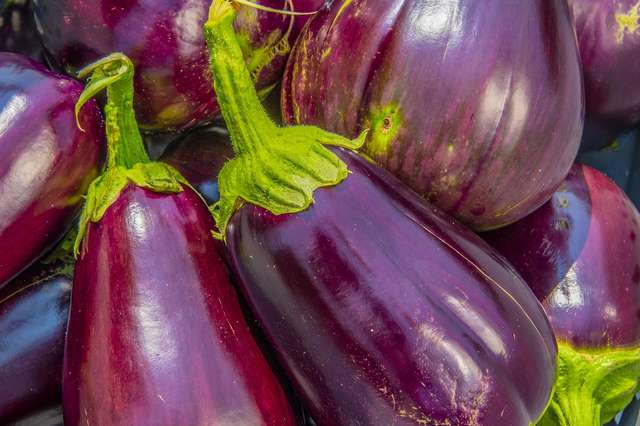 And this is an example of the chemical structure of carotenoid:
And this is an example of the chemical structure of carotenoid:
 We can find several different carotenoids in fruits and vegetables as well.
We can find several different carotenoids in fruits and vegetables as well.
We are all familiar with plants containing carotenoids, aren't we?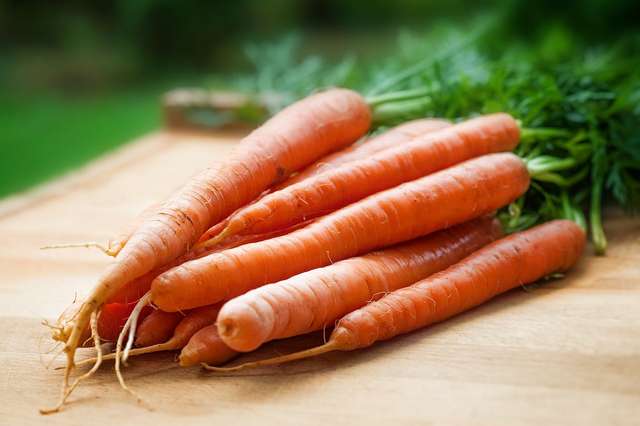
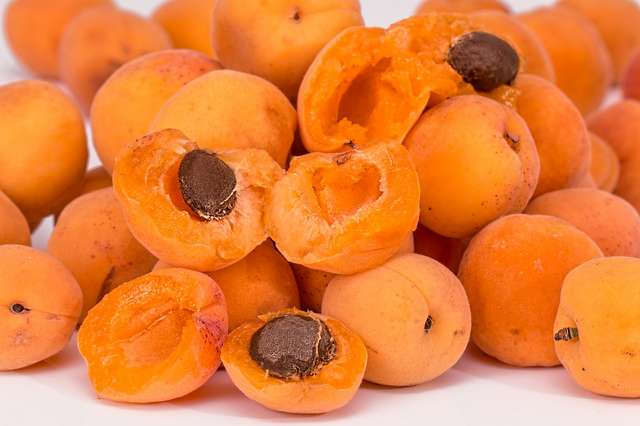
The presence of different pigments in a plant can be proved by a simple experiment:
You can make a similar experiment with the use of paper with good absorptive properties (think coffee filters) and an improvised equipment. Just an idea for a rainy Saturday activity with kids...
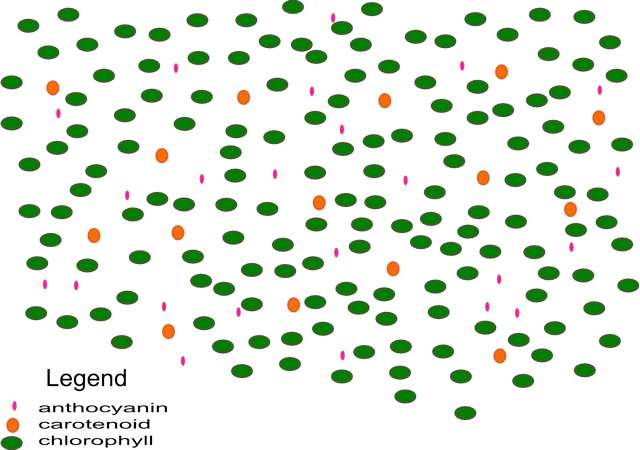 Now we know two important facts:
Now we know two important facts:
- why are leaves green,
- green is not the only color in the leaves.
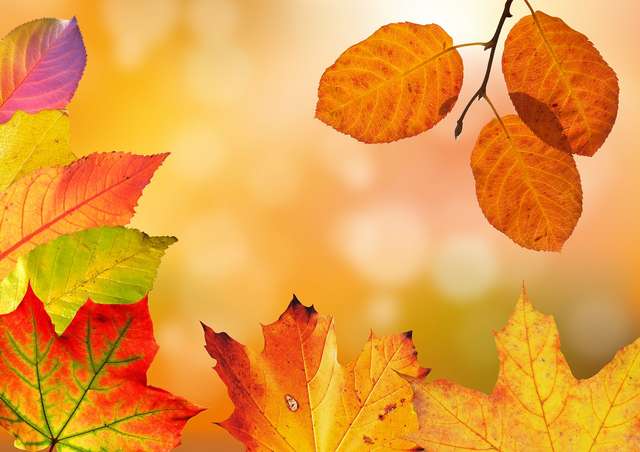
But why do leaves change color?
When the plant gets enough sun, chlorophyll makes food and some energy is used to synthesize additional units of chlorophyll (in the meantime some units of chlorophyll will inevitably decompose just like ever worker's tool will eventually become worn-out). Days are shorter In the autumn. Less energy from the sun reaches the plant.
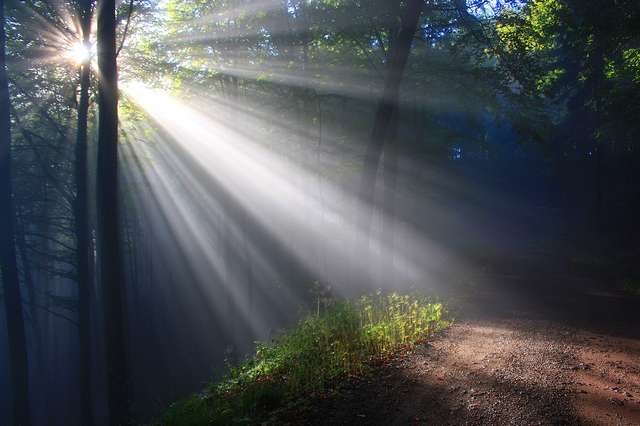
Chlorophyll is less and less useful. The plant switches into energy-saving mode. The loss of useless pigment is just the first step. In the next picture, you can see some hypothetical byproducts of decomposition of chlorophyll.
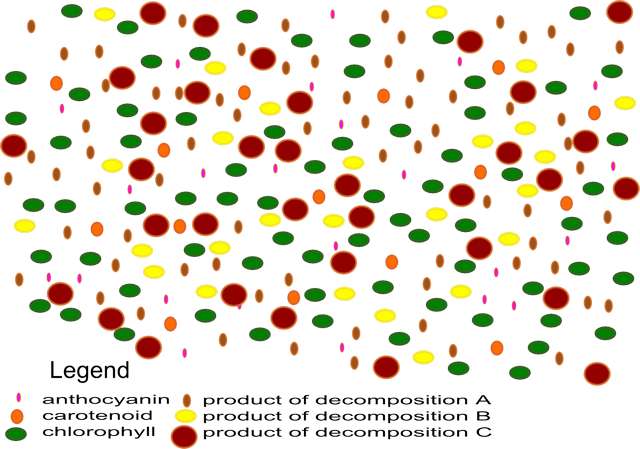
The reaction can be pretty complex thanks to varying conditions (presence of different sugars, time of exposition to sunlight, temperature changes, the presence of enzymes and other substances, ...), but the general idea is here. Percentage of chlorophyll pigment is obviously lower than before, other pigments are more visible and several other colorful molecules appear.
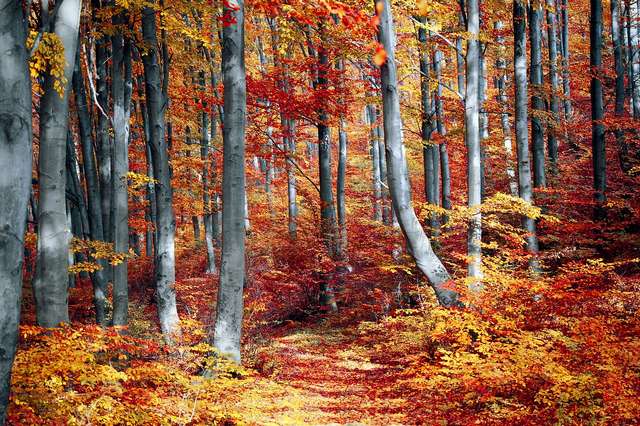
Eventually, all chlorophyll will disappear and the basic function of the leaf (making food) is completely turned off.
Leaves are just a ballast now. They should fall off. Well, this is actually our final answer to the question of why leaves turn color in the fall!
